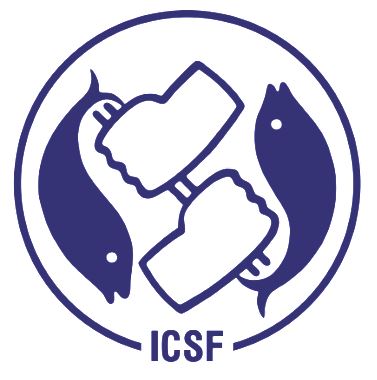Haroon, A.K.Yousuf (1998) Diet and feeding ecology of two sizes of barbodes gonionotus (=Puntius gonionotus) and oreochromis sp.in rice fields in Bangladesh. Naga The ICLARM Quarterly, Vol.21 (3). pp. 13-19. ISSN 0116-290X
Full text not available from this repository. (Request a copy)Abstract
Fish culture experiments were conducted to compare and evaluate the feeding pattern and strategies, daily ration, gastric evacuation rates, dietary breadth, similarity and overlap of silver barb, Barbodes gonionotus, and tilapia, Oreochromis sp. (natural hybrid of O. mossambicus x O. niloticus) in a rice-fish system. B. gonionotus was found to be a macrophtophagous column feeder while Oreochromis sp. was a detrivorous benthophagic browser. Ontogenic shifts in diet were clearly observed in B. gonionotus while absent in Oreochromis sp. For both species, daily food ration for the small fish was twice as large as that for the large fish. Mean rates of gastric evacuation were 0.18 h super(1) for small and 0.05 h super(1) for large B. gonionotus and 0.09 h super(1) and 0.14h super(1) for small and large Oreochromis sp., respectively. In terms of intraspecific dietary width, the smaller sized individuals of both species had a wider dietary niche than the larger conspecifics. Larger fish increased their specialization and reliance on few food items with increasing size and competitive ability. When both species were reared together, B. gonionotus showed a wider niche width than tilapia. Wider interspecific niche width of B. gonionotus compared to that of tilapia and significant interspecific dietary overlap is likely to result in suppression of the growth of tilapia in mixed culture due to: 1) a high degree of specialization and reliance of tilapia on food of low-nutrient value, and 2) slower gastric evacuation rates as compared to B. gonionotus, which would allow B. gonionotus to outgrow similar sized tilapia.
| Item Type: | Articles |
|---|---|
| Keywords: | Rice Fish Culture, Animal Feed, Fish Feeds, Fish Species, Phytoplankton, Plankton, Water Quality, Statistical Methods, Fish, Population, Ecology, Aquaculture |
| Subjects: | Aquaculture |
| Depositing User: | Varsha V icsf |
| Date Deposited: | 30 May 2022 05:33 |
| Last Modified: | 30 May 2022 05:33 |
| URI: | http://icsfarchives.net/id/eprint/13268 |
Actions (login required)
 |
View Item |


